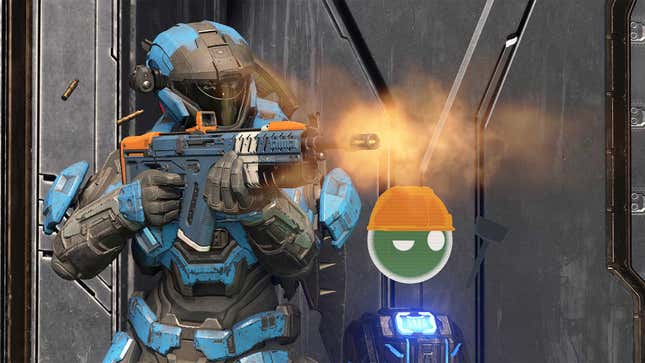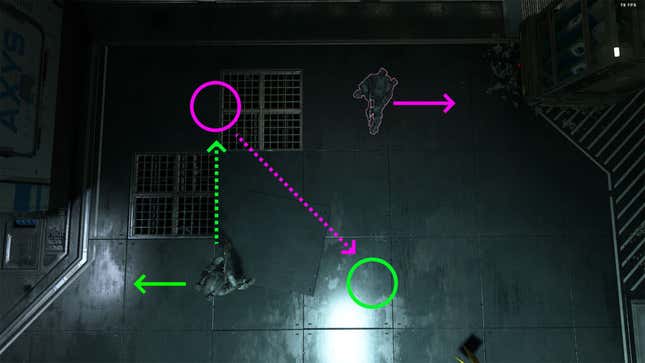
If you’ve played a competitive online shooter, it’s happened to you. You shoot an enemy a bunch. You swear you saw your shots connect. But the next minute, it’s you who’s sitting through a respawn timer. To take it from hardcore players, Halo Infinite can seem particularly egregious about such matters of desync, and it’s something its developer has now addressed in a blog post this afternoon.
Since its launch in November, Halo Infinite’s free-to-play multiplayer mode has struggled with reports of connectivity troubles, much like most first-person shooters that rely on a steady internet connection. Players have lamented these desync issues, which manifest in various forms: rubber-banding, missed shots, bullets arcing unnaturally around corners, melee attacks seemingly clipping through targets. The sticking point isn’t necessarily that connectivity woes are happening in the first place—again, this stuff is pretty common in modern gaming—but rather that Halo Infinite’s developer, 343 Industries, has gone months without publicly offering a thorough explanation (and potential solution).
Today’s post is the first time 343 has publicly addressed Halo Infinite’s desync in depth. Fair warning: It is dense, full of math and numbers and all sorts of highly technical terms. If that’s your thing, hey, go have yourself a field day. But the more casual Halo Infinite players should be happy to know it details a handful of planned short-term and long-term fixes, alongside explanations for why all this is happening in the first place.
“In Halo, we choose to favor the shooter,” 343 Industries lead sandbox engineer Richard Watson wrote. “Practically, this means that whatever happened on the shooter’s screen the server endeavors to honor. That means whenever a player sees themselves hitting a target, our system does its best to give them the hit on the server.”
Basically, if a player’s ping rating isn’t exactly fantastic, they can still get killed despite hiding behind cover, a phenomenon 343 detailed with a series of screenshots snapped on the Recharge map. You might be hiding behind the wall in the upper corridor ramparts, but if the person shooting you sees you in the open, then they get the kill. It’s chalked up to a metric called round trip time, which is measured in part via milliseconds. No way the human eye can pick up on every detail at that speed. But you can still feel burned by the results, especially on the receiving end (and in viewing post-match play-by-plays in Halo Infinite’s theater mode).
As for melee attacks missing their mark, that’s a bit more complicated. Halo Infinite has long been plagued by a fan rumor that there’s no player collision—basically, the ability for players to touch each other in-game—in the multiplayer mode. In today’s blog post, Watson stressed that that’s absolutely not the case, and that player collision is supposed to be present between opponents in Halo Infinite. But sometimes, again a result of poor latency, the game’s multiplayer servers register your successful melee attack but don’t fully convey to you that your opponent has moved their position, which can look like you’ve essentially just phase-punched through an enemy. Watson detailed in a series of screenshots that look like Super Bowl diagrams:

Watson further said that improvements to Infinite’s latency problems should address such issues. And fixes are indeed already in the works.
For starters, 343 Industries will now prioritize low pings in matchmaking. Watson didn’t detail what was prioritized before, but the fix “should help you match with local players, and therefore have a better connection, more often.” You’ll also start matching with folks from your own geographical region on a more regular basis, hopefully providing more stable server connections. Down the line, Halo Infinite will feature indicators on the mid-match scoreboard that’ll tell you whether or not you’re playing with someone who has poor connection. That’s planned alongside a forthcoming indicator that’ll let you know when your own connection is poor. And if these solutions don’t mitigate connectivity issues across the board, 343 says it’ll look into the option of adding a server selection feature to Halo Infinite.
These updates are the latest to join a number of other positively-received changes recently introduced to Halo Infinite over the past month or two. The once-lambasted prices of the microtransaction store have been lowered. The once-busted Big Team Battle mode has been fixed. Those are in addition to the revolving door of entertaining modes and events. When season two rolls around, it’ll add more content, including a cooperative campaign, which precipitates the player-creation Forge mode later in the year. Now, the only thing missing—I’ve said it before, I’ll say it again—is the return of King of the Hill.